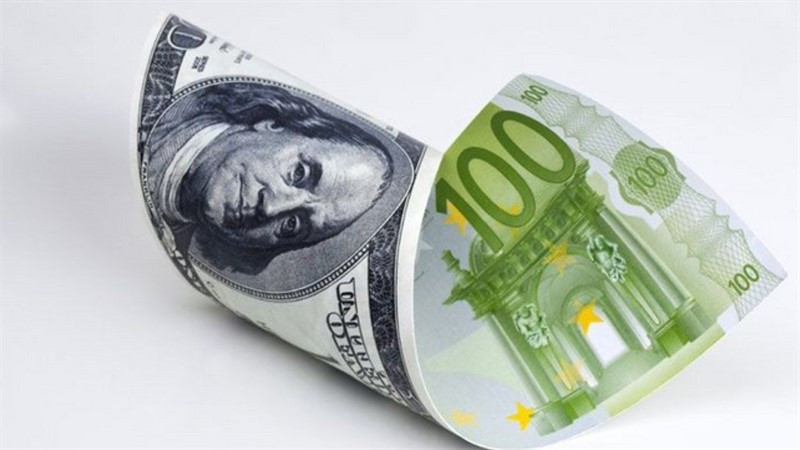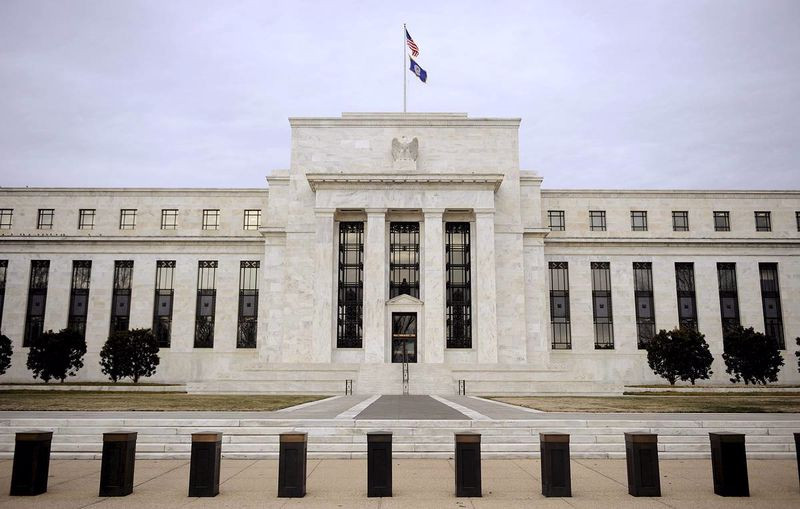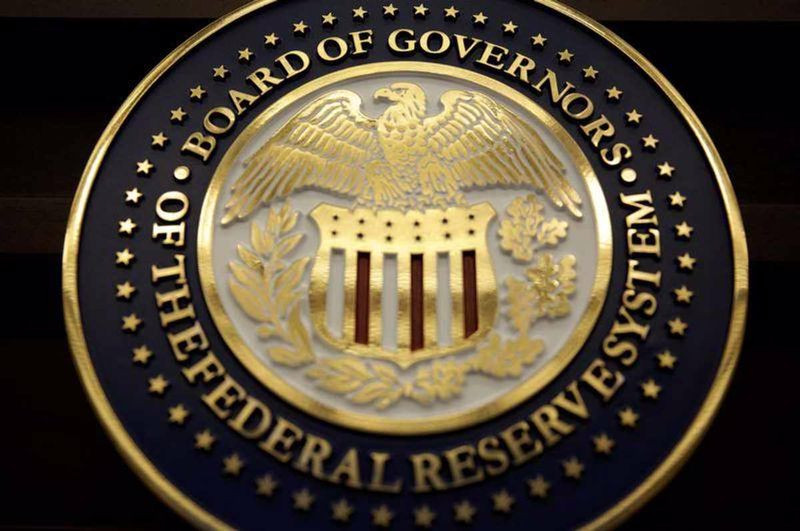
For the third day, the EUR/USD pair runs in a narrow range of 1.1300-1.1400, then falling to its lower border, then bouncing to the upper one.
The greenback continues to circle around the 96 mark, and the key Wall Street indices fluctuate between gains and losses, as the attitude to risk is constantly changing, and volatility remains high.
Investors are following the development of the situation around Ukraine and are trying to catch signals from the Federal Reserve ahead of the March meeting of the central bank. Market participants are still arguing over whether the US central bank will raise rates next month by 50 basis points, or only by 25 basis points.
On Wednesday, the dollar fell in price against its main competitors, including the euro, by more than 0.1%, despite the strong US statistics and the hawkish tone of the minutes from the January FOMC meeting.
Data published yesterday showed that retail sales in the country jumped by 3.8% in January compared to the previous month.
Apparently, Omicron and inflation failed to force American consumers to abandon purchases in January. Retail sales last month rose at the fastest pace since March 2021, when households began receiving checks from the government, Oxford Economics analysts say.
Although the new strain of coronavirus forced Americans to cut spending on bars and restaurants by 0.9%, the volume of online purchases increased by 14.5%. Sales of cars and furniture were also high.
Meanwhile, the rhetoric of the minutes from the January meeting of the Fed did not differ from recent public statements by representatives of the central bank.
Most FOMC members believe that interest rates should rise faster than in 2015.
However, investors were relieved that the central bank did not demonstrate an even greater inclination to tighten monetary policy.

There has been a lot of buzz lately about a potential Fed rate hike of 50 basis points in March and up to seven hikes this year. However, there was no such persuasiveness in the minutes, which repeated that any tightening of policy would occur from meeting to meeting.
The market was concerned that the aggressive political position of St. Louis Fed President James Bullard had become more widespread, but the fact that the Fed's rhetoric was no more hawkish than previously thought, in any case, saved stocks at the moment.
The major US stock indexes spent most of yesterday's session in negative territory, showing a significant decline. After the release of the minutes from the last FOMC meeting, they were able to minimize losses. The S&P 500 even closed with a slight increase (by 0.1%), near 4475 points.
The yield on 10-year US Treasury bonds ended the day at 2.044%, unchanged from Tuesday. At the same time, the greenback was subjected to short positions. The USD index fell by more than 0.1% the day before and ended trading around 95.82.
This is not surprising, given that the text of the minutes did not present any surprises, and the results of the Fed meeting, which took place on January 26, the market played back in the next two weeks.
January retail sales in the US did not have a positive impact on the US currency, as investors ignored these data, allowing for the possibility of passing the peak of demand.
The dollar also lost ground due to the fact that the premium for geopolitical risk has left the markets.
On Wednesday, the Russian Defense Ministry announced that it was withdrawing troops from Crimea after the end of the exercises. Western intelligence reports that Moscow may invade a neighboring country have not yet materialized.
Finally, investors began to put into quotes the probability that high inflation could force other leading central banks to also accelerate the tightening of the PREP.

The minutes from the last Fed meeting could not support the dollar to the proper extent, because traders expect similar hawkish steps from other central banks, strategists at MUFG Bank believe.
"This creates more serious obstacles to further strengthening of the dollar in the near future, unless geopolitical tensions increase significantly and risky assets go into correction," they noted.
On the eve of the ECB Governing Council member Francois Villeroy de Galo said that the central bank may stop buying assets in the third quarter of this year.
In his opinion, rising inflation and geopolitical risks require more variability from the central bank.
"I think that a lot of variability means that we should determine the end date of the asset purchase. I think it could happen around the third quarter, although the exact time is still to be discussed," Villeroy de Galo said.
His comments, along with the easing of tensions in eastern Europe, contributed to the strengthening of the euro against the US dollar. The EUR/USD pair ended yesterday's session with an increase of more than 0.17%, about 1.1380. At the same time, during trading, it rose to 1.1395.
Market participants should prepare for further volatility, experts warn.
There are still enough reasons for concern. First of all, this is high inflation, uncertainty that central banks are ahead of it in their actions, as well as the disordered recovery of the global economy, the balance of supply and consumer demand. A potential escalation of tensions in Eastern Europe could be the cherry on the cake. This threat is shaking the still fragile global oil market, which is likely to increase inflationary pressure.
The withdrawal of part of the Russian troops from the regions bordering Ukraine and signs of a more diplomatic tone on the part of the Russian leadership were regarded as a serious de-escalation of the risk of conflict development, which provoked an improvement in market sentiment on Wednesday. However, this optimism did not last long.
The main US stock indexes are falling on Thursday on a decrease in risk appetite due to the tense situation around Ukraine. In particular, the S&P 500 is losing about 1.5%.
The self-proclaimed republics of Donbass today reported shelling by Ukrainian security forces on their territory in violation of the Minsk agreements. Although this message was later refuted by the Ukrainian side, it stirred up the market and sent investors into protective assets.
Against this background, the USD index jumped above 96.00, but then adjusted slightly.
The EUR/USD pair is also feverish today on the Ukrainian news. Although it has recovered after falling to 1.1320, it is obviously difficult for it to gain bullish momentum.

Russia is trying to ensure that Ukraine is not included in NATO, offensive weapons are not deployed there, and the DPR and LPR receive a special status. Europe is interested in stable supplies of Russian gas at low prices and is in a hurry to reach a compromise, but much depends on the United States.
Western politicians' ratings are now falling amid high inflation, so they are delaying negotiations to wait out a dangerous moment and prevent a new wave of rising oil and gas prices.
The Russian authorities understand that there will not be another such moment: the energy crisis will be a thing of the past, and the balance in energy carriers will no longer be so fragile, and the situation with inflation will not be so critical.
If the West meets Russia's demands, the passions around Ukraine will subside.
However, markets may have become optimistic too soon about a diplomatic solution to this problem, ING strategists say.
"We see a high probability that the Russian-Ukrainian situation will not take any clear direction in the next few days and may turn into a protracted diplomatic game. The dollar may find some support until we get more clarity on this issue," they said.
"In addition, the markets do not want to remove the March Fed rate hike by 50 basis points from the prices. Currently, the probability of this step is estimated at 50%. This should continue to support the dollar during falls, and the level of 95.50 may again become the basis for USD in the event of another round of sales of the US currency," ING said.
If the situation around Ukraine is resolved diplomatically, the euro will be able to find demand for increased risk appetite. The dollar is likely to remain strong as long as geopolitical uncertainty remains a negative factor for the market.
The initial obstacle for the EUR USD pair is located at 1.1400, then resistance is noted at 1.1450 and 1.1500.
On the other hand, support is at 1.1350, followed by 1.1300 and 1.1250.
 English
English 
 Русский
Русский Bahasa Indonesia
Bahasa Indonesia Bahasa Malay
Bahasa Malay ไทย
ไทย Español
Español Deutsch
Deutsch Български
Български Français
Français Tiếng Việt
Tiếng Việt 中文
中文 বাংলা
বাংলা हिन्दी
हिन्दी Čeština
Čeština Українська
Українська Română
Română

